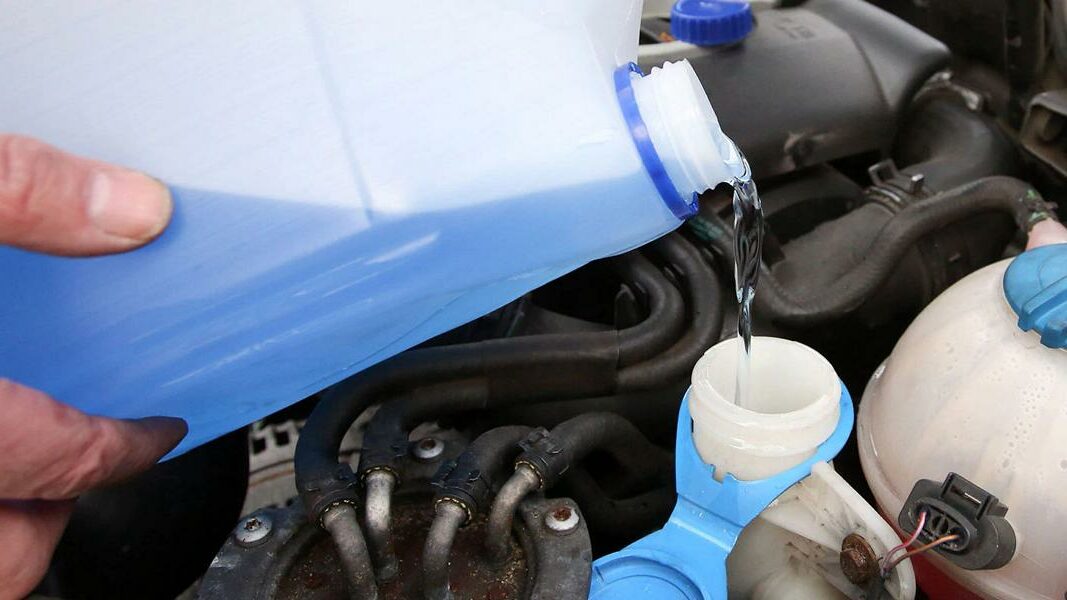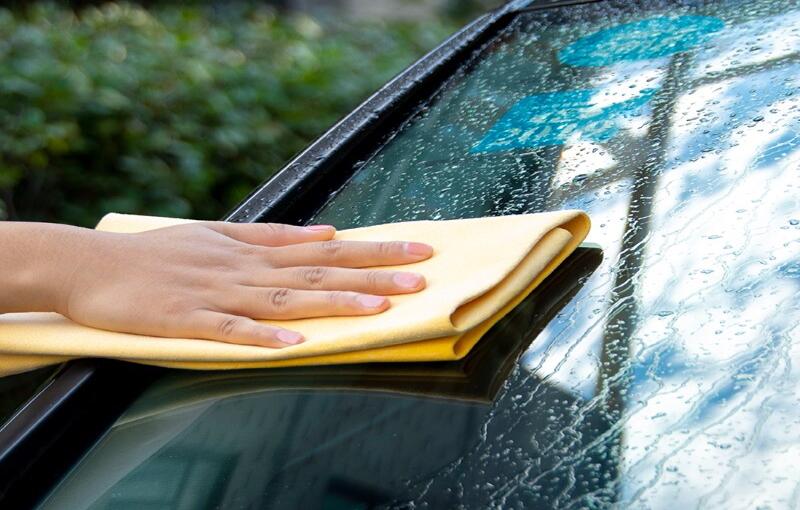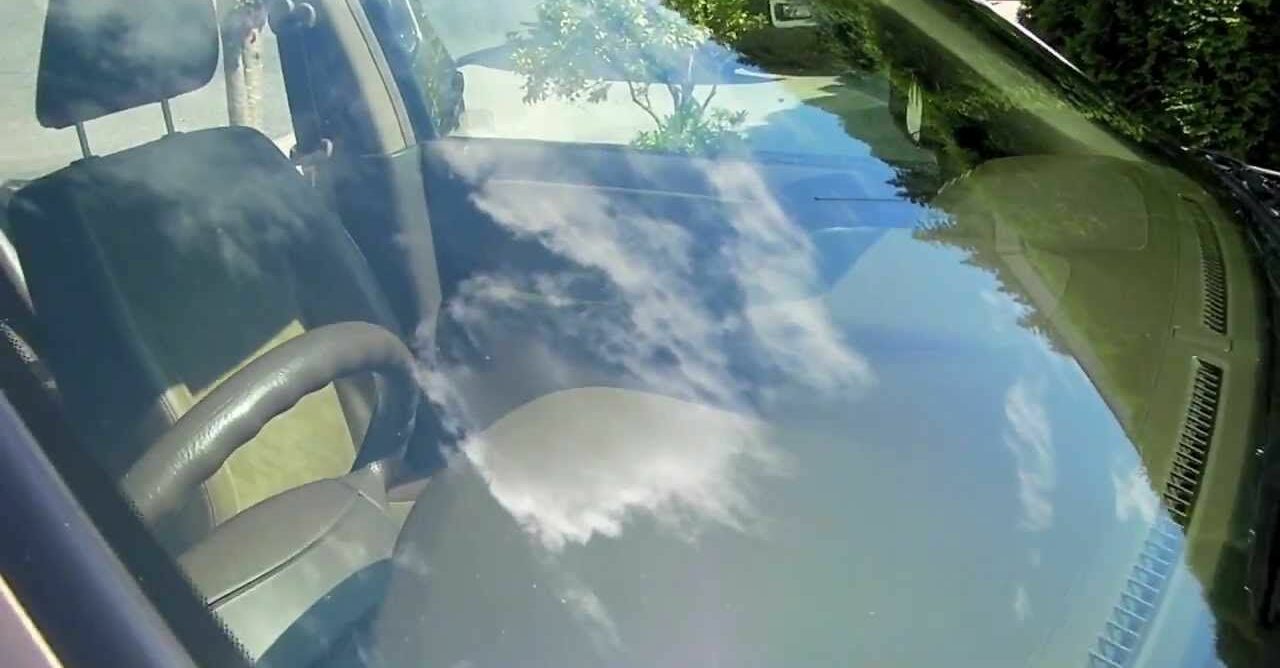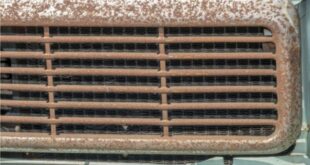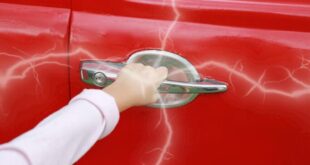washer fluid is one of the most important liquids in the automotive sector. However, most commercially available products contain it Methanol, a toxic chemical that is dangerous even in small doses. Because methanol is hazardous to health and harmful to the environment, many choose to use their methanol-free windshield washer fluid to produce yourself. And it's even easier than you think, since only commercially available ingredients are required and you can save quite a bit of money in the long run.
Stretch glass cleaner
Become the first step four liters of distilled water filled in a container. This container must be total though at least five liters able to hold liquid. And it has to be sure Distilled water should be used, otherwise nozzles and pumps in the windscreen wiper system clog respectively deposits can arise.
Tap water can also be used in emergencies, but the liquid must be replaced or sprayed empty as soon as possible. The distilled water will be 250 ml commercially available glass cleaner added. According to the description, the glass cleaner should not leave any streaks and should not foam too much. This method is suitable for everyday use mainly in summer. The liquids must be mixed well and the liquid can then be poured into the appropriate container in the car. But before you add them to the car, you should wipe the mixture on the glass with a rag test. It is important to ensure that no streaks remain.
Mix dish soap and ammonia
Also here will four liters of distilled water placed in a clean container. The container must also five liters of liquid can grasp. Now one tablespoons of dish soap, added to the distilled water. Of that should no way too much can be used, otherwise the liquid could become too thick. Of course, you can also use the washing-up liquid no streaks or other residue leave behind. If the detergent foams too much, another should be used. Well will 125 ml ammonia added to the liquid. The ammonia may also does not foam and should not contain any additives or surfactants included. Attention: Concentrated ammonia can be dangerous, so only work with good ventilation and wearing gloves. Now the liquids need to be shaken well. Once the ammonia is mixed with the water, the agent is safe to use.
Before However, if the agent is poured into the vehicle's water tank, it should be tested with a rag on the windshield. If the cleaner removes the dirt without leaving any residue, it can be poured into the container.
Use rubbing alcohol as antifreeze
To the self-made solutions should 250 ml rubbing alcohol as antifreeze be added when temperatures under zero degrees threaten. The alcohol is important in case temperatures drop below freezing. In a mild winter can 70 percent Rubbing alcohol should be used. At particularly low temperatures, however, 99 percent Rubbing alcohol can be used. To check if the homemade cleaning solution freezes, a small cup should be left outside overnight. Should the liquid freeze, must more alcohol be added. The test must then be performed again. This step is absolutely necessary so that the hoses and the entire system in the car do not freeze. When temperatures drop, leftover liquid should be drained (sprayed) from the cleaning tank, otherwise the winter liquid could be diluted too much, allowing the mixture to freeze again. If it is urgent and there is no rubbing alcohol, then there is one high proof vodka a possibility.
Windshield washer fluid with vinegar for the winter
Become the first step three liters of distilled water placed in a clean container. This container must have at least four liters can grasp. Now the distilled water 1 liter of vinegar added. But here it is allowed only white wine vinegar be used as other vinegars can leave residue and stains. Now the liquids are mixed together. If temperatures drop below freezing, the liquid should as well getting tested, before they are placed in the appropriate water tank. If the liquid freezes, you need more 500 ml vinegar be added to the self-mixed liquid. If the cleaner freezes again, add another 250 ml of rubbing alcohol. Tip: Use the liquid not in summer. Hot vinegar often smells putrid and pungent!
Tips and Tricks - Windshield Cleaner
Filling the vehicle with new washer fluid is easier than you think. In the engine compartment, only the container for the cleaning fluid needs to be found. This is usually large, angular and is usually made of white or transparent plastic. The screw cap must be screwed on. A funnel makes filling child's play. When changing from summer to winter fluid, the rest of the cleaning fluid should be disposed of. If the liquid contains methanol, the cleaning tank should be sucked out with a pipette. In emergencies, water can also be used as a cleaning fluid. However, this does not clean so well and bacteria and germs can also multiply in the water.
If recycled containers are used for mixing and storage, the containers should be previously well cleaned will. The finished cleaning liquid must be labeled. You can also dye the homemade cleaner with blue food coloring to make the product look like a commercial cleaner. The cleaning fluid must absolutely out of the reach of children and animals be kept. Distilled water must be used when mixing the cleaning liquid, otherwise minerals may form. Furthermore, may no vinegar with soaps and suds mixed, as both substances can react with each other and coagulate, which can clog the lines. The finished solution is not only suitable for the windshields, but can for the whole car should be used.
The following note is essential: For safety reasons, tuningblog recommends all repair, inspection and maintenance work exclusively to be carried out in a specialist workshop! Although our information is summarized to the best of our knowledge and belief, we cannot assume any liability for the content. All information is therefore "without guarantee".
Of course, that wasn't the end of it!
In this tuningblog category there are guides and instructions for common defects/repairs on the vehicle and for installing accessories/tuning parts. Our articles explain in a simple way common defects and the corresponding repairs, as well as explaining how the first signs of a defect become noticeable. In most cases, we also have initial clues to the repair instructions in our repair instructions approximate The costs of the pending repair are listed. The goal of our subcategory “Auto Repair Guide“ is to create a head start in knowledge for the next visit to the workshop with initial tips. This may save you from tedious troubleshooting and small things can perhaps be done directly on your own. The same applies, of course, to the installation of accessories/tuning parts. Here, too, we would like to help with the implementation with instructions and tips. There are many other posts on this as well. Below is an excerpt of the last and HERE there are all previous instructions:
"tuningblog.eu" - we keep you up to date on the subject of autotuning and car styling with our tuning magazine and present you with the latest tuned vehicles from all over the world every day. It's best to subscribe to ours Feed and will automatically be informed as soon as there is something new about this post, and of course also to all other contributions.
 tuningblog.eu Your magazine about tuning the car
tuningblog.eu Your magazine about tuning the car
